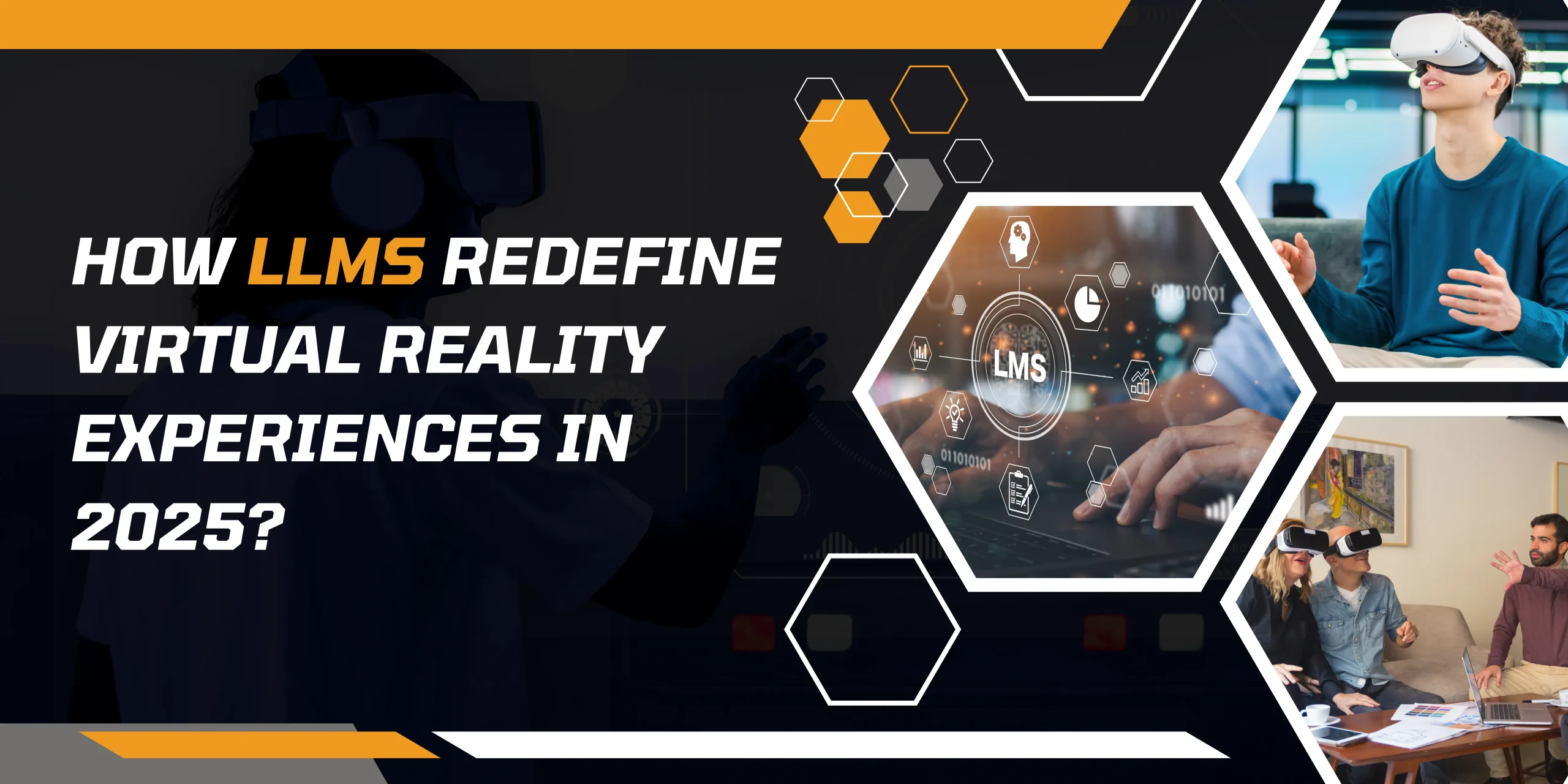October 31st, 2025
Category: AI and Edge Computing,ai app development,virtual reality,VR training
No Comments
Posted by: Team TA

What Makes Large Language Models Unique?
Large Language Models (LLMs) represent a remarkable advancement in artificial intelligence (AI), designed to analyze vast amounts of data and generate human-like language. By leveraging self-attention mechanisms and transformer-based networks, LLMs discern intricate patterns in word relationships, allowing them to predict subsequent phrases in a conversation.
When integrated with virtual reality (VR), these models enhance digital interactions, making them more engaging and lifelike. Not only can LLMs interpret spoken language and gestures, but they also respond to the virtual environment in real time, facilitating spontaneous and natural dialogues. This powerful combination enriches user experiences, resulting in a VR environment that feels responsive, immersive, and truly alive.
How LLMs Redefine Virtual Reality Experiences?
Large Language Models (LLMs) redefine virtual reality by making interactions feel more natural, personal, and responsive. Digital agents with LLM capabilities can have context-aware conversations that adapt on the fly rather than relying on strict, pre-written responses. These agents adapt in real-time to a user’s behavior, preferences, and even emotional cues through multimodal capabilities, including voice, facial expressions, and gestures, as well as in-context learning.
The outcome? Game characters with dynamic personalities, therapy settings that are sensitive to each learner’s needs, and virtual tutors that adjust to each student. Through verbal and nonverbal communication, LLMs turn VR from a predictable system into a human-like, immersive experience that increases engagement, fosters trust, and provides more useful guidance than conventional rule-based approaches.
Key Dimensions of Awareness in Virtual Reality (VR) Environments?
In VR, awareness is essential in generating meaningful and engaging experiences. Users’ interactions with virtual environments are influenced by four main types: situational, social, spatial, and self-awareness.
Spatial awareness facilitates natural navigation and orientation, much like in the real world, by assisting users in understanding the location and relationships of objects and avatars in virtual reality. This skill is improved by spatial arrangements and visual cues.
The ability to perceive and react to changes in the environment over time is known as situational awareness. Recognizing dynamic elements and real-world cues that affect virtual environments is essential for both safety and productive interaction in virtual reality.
Users with social awareness can recognize and understand the feelings, intentions, and actions of others. Avatars and full-body tracking are two examples of technologies that facilitate real-world social interactions and enhance teamwork and communication.
Self-awareness allows users to adopt various avatars or viewpoints to reflect on their feelings and actions. This promotes growth and self-discovery in VR. When combined, these factors improve VR experiences by increasing their emotional resonance, intuitiveness, and engagement. Understanding these forms of awareness is key to advancing VR technology and enhancing user interaction.
How do LLMs Enhance User Experience in VR Environments?
Imagine entering a virtual reality environment where every item, interaction, and dialogue feels natural and alive. That is what LLMs offer. You can easily improve your spatial awareness by asking questions about objects or receiving real-time guidance while navigating virtual spaces, thanks to these models, which allow immediate dialogue with the environment.
Additionally, LLMs improve situational awareness by assisting you in recognizing and reacting to dynamic changes, which facilitates staying focused and enabling you to act quickly. By deciphering the intentions, emotions, and actions of collaborators or avatars, they even improve social awareness, making interactions seem organic and human.
LLMs also reduce cognitive load. The system anticipates your needs and simplifies your actions so you can concentrate on the experience rather than becoming bogged down in complicated menus or tasks. Also, by combining contextual, visual, and verbal cues, LLMs increase your cognitive and sensory awareness. The environment feels responsive, engaging, and cohesive due to this multimodal approach.
To put it briefly, LLMs redefine virtual reality (VR) into a more intuitive, emotionally intelligent, and immersive environment where awareness is increased, interactions are smooth, and each experience feels customized for you.
The Best Practices of LLMs Redefining Virtual Reality Settings
Virtual spaces can become more natural and interactive by utilizing LLMs in VR, but they need to be designed well. According to studies, these systems function best when they concentrate on a few key practices. To earn users’ trust, LLM systems should provide natural, context-aware, and personalized interactions. They should support learning by adjusting guidance as users progress. By anticipating user needs and optimizing workflows, tasks should be completed more quickly and simply. Users should not be overloaded with information, and virtual objects should have responsive, easy-to-use controls. These practices make LLM-powered VR environments engaging, adaptive, and easy to navigate.
Key Applications of LLMs in VR Games?
As demonstrated by GPT-4-powered characters in VRChat, large language models are revolutionizing VR gaming by creating realistic NPCs (non-player characters) that speak naturally, display emotions, and retain consistent personalities. By creating branching narratives and adaptive quests based on player input, they propel procedural storytelling. In games like Starship Commander: Arcade, LLMs make it possible for real-time virtual assistants to replace menus with fluid voice interactions. They offer immediate feedback and decision support for dynamic learning in training-focused virtual reality. Lastly, even non-programmers can create VR content via LLM tools, which enable users to design environments and object behaviors in plain language.
Strategies to Address the Challenges of Integrating LLMs into VR Environments
Physiological, technical, and usability factors must be carefully considered when integrating LLMs into VR. While excessive emphasis on positivity or robotic delivery may reduce realism, emotional dynamics, communication style, paraverbal clues, and avatar characteristics all affect user trust and engagement. Technically, to avoid motion sickness and guarantee accurate responses, real-time processing, multimodal integration, and latency minimization are essential. Adaptive interfaces, culturally aware designs for a range of users, and interactive onboarding are all necessary for inclusivity. Minimalistic design can help reduce cognitive overload, and new metrics for evaluation must consider context-aware, multimodal, and spatial interactions in addition to conventional UX metrics.